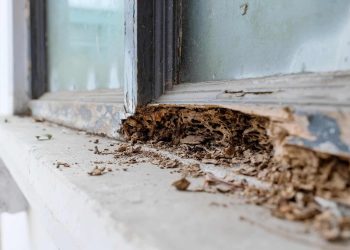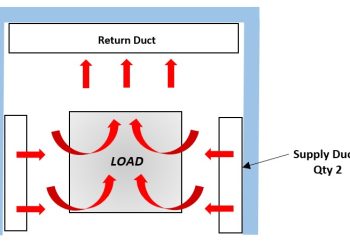Corrosion remains one of the major challenges for metals. When exposed to air, water, and other elements, metals start to rust and weaken. Over time, this damage can diminish their appearance and make them unsafe to use. To tackle this issue, plating has emerged as a trusted solution to protect metals from corrosion and keep them strong. Metal plating acts like a shield, keeping out moisture and oxygen that cause corrosion. Keep reading this article as we’ll explore how plating prevents corrosion, the materials used, and why it’s so essential in modern manufacturing.
Plating for Corrosion Protection
Plating is one of the most effective ways to protect metals from corrosion. It involves adding a thin layer of another material, such as zinc, nickel, or chrome, to the surface of a metal. This extra layer acts like a tough outer shield, stopping moisture, air, and other corrosive elements from reaching the metal underneath. As a result, the metal stays strong and durable when these elements can’t get through.
Some coatings add extra benefits. For example, certain plated layers can make metals harder, more heat-resistant, or even more attractive by giving them a shiny or polished look. However, the effectiveness of plating depends on several factors. This includes the material used for the coating, the thickness of the layer, and the conditions the metal will face. For instance, zinc coatings work well for outdoor structures, while nickel is preferred for parts exposed to wear and tear. The right choice makes all the difference in how well the metal resists corrosion over time.
Metal Plating Techniques
A set of zinc-plated steel gates in the electroplating process
There are different types of metal plating applied across several industries. Each technique suits different needs. Check them below:
Electroplating
This is one of the most common methods. In this method, the metal gets submerged in a solution containing ions of the coating material. An electric current runs through the solution, attracting these ions to the metal’s surface. Over time, they form a smooth, even layer. Electroplating is widely used for materials like nickel, gold, or silver and is known for creating a precise, controlled finish.
Hot-Dip Galvanizing
In this process, the metal is dipped into molten zinc, which bonds to the surface and forms a thick, durable coating. This method best suits larger structures like fences, bridges, and industrial equipment because the zinc coating provides corrosion resistance and sacrificial protection. This means the zinc layer corrodes instead of the base metal.
Electroless Plating
Unlike electroplating, this method doesn’t use electricity. Instead, a chemical reaction causes the coating material to deposit onto the metal. It’s often used for materials like nickel and is favored for its uniform coating, even on complex shapes or hidden areas.
Physical Vapor Deposition (PVD)
This is a high-tech method where a thin layer of material is vaporized in a vacuum and then deposited onto the metal surface. While not as common for corrosion protection, it’s used in specialized applications, especially for wear-resistant or decorative coatings.
How Corrosion Affects Metals Over Time
rusty metal nuts and bolts
Corrosion slowly destroys metals by reacting with their surface. This happens when metals come into contact with moisture, oxygen, or chemicals in the environment. Over time, these reactions break down the metal’s structure, making it weaker and less reliable. What starts as a small patch of rust can quickly spread, eating away at the surface until the metal becomes brittle or even falls apart.
The effects of corrosion depend on the type of metal and the conditions it’s exposed to. For instance, steel rusts easily when exposed to water and air, forming that familiar orange-brown layer of iron oxide. Aluminum, on the other hand, forms a protective oxide layer that slows down further corrosion, but even it can fail in harsh environments like saltwater.
Certain environments speed up corrosion. Humid climates, salty air near oceans, and industrial areas with pollution all make metals corrode faster. Once corrosion starts, it spreads unless it’s stopped. This is why protecting metals before corrosion sets in remains important. Plating is one of the best ways to fight this problem. The added protective layer helps keep corrosion at bay and extends the life of the metal.
Role of Plated Layers in Preventing Rust
Plated layers are crucial in protecting metals from rust. They create a barrier between the metal and harmful elements like water and air, which are the main causes of rust.
Here’s how plated layers prevent rust effectively:
Acting as a Protective Shield
Plating covers the metal’s surface with a thin, durable layer that blocks moisture and oxygen from reaching it. Without this contact, the chemical reaction that causes rust cannot occur.
Sacrificial Protection with Certain Coatings
Materials like zinc offer sacrificial protection. When exposed to moisture, the zinc coating corrodes first, sparing the metal underneath. Even if the surface gets scratched, the zinc layer continues to protect by corroding instead of the base metal.
Non-Porous Coatings for Extra Defense
Plated layers made of nickel or chrome are smooth and non-porous. They seal the metal completely, leaving no gaps for water or air to sneak through. These coatings also resist scratches, making them perfect for items that get regular use, like car parts, taps, or kitchen tools.
Resisting Chemical Reactions
Metals often face exposure to chemicals in industrial or polluted areas that can speed up rusting. Plating materials like chrome or nickel resist chemical reactions, adding another layer of defense. This makes plated layers ideal for machinery, vehicles, and equipment used in harsh environments.
Preventing Rust Spread
Once rust starts, it spreads quickly. Plated layers stop this by sealing off the metal surface entirely. Without access to moisture or air, rust can’t form or grow, keeping the metal strong and reliable over time.
Common Plating Materials for Corrosion Resistance
hard chrome plating of shaft metal
Different materials are used for plating, and each has unique properties that make it effective against corrosion. Choosing the right one depends on the type of metal, the environment it will face, and the purpose of the coating.
Check some of the most common plating materials below:
Zinc
Zinc is a popular choice for corrosion protection, especially for steel. It works by providing sacrificial protection, meaning the zinc layer corrodes instead of the base metal. This makes it ideal for outdoor structures, like fences, pipelines, and bolts, that face constant exposure to moisture. Zinc plating is also cost-effective, making it a go-to option for large-scale applications.
Nickel
Nickel plating creates a tough, non-porous layer that resists rust, wear, and scratches. It’s commonly used for items that need both durability and a polished appearance, like kitchen appliances, car parts, and tools. Nickel plating also holds up well in humid or polluted environments, making it a reliable choice for corrosion resistance.
Chrome (Chromium)
Chrome plating is known for its shiny, mirror-like finish, but it does much more than look good. It forms a strong, smooth layer that resists rust, scratches, and even chemical damage. Chrome is often used for automotive parts, bathroom fixtures, and industrial equipment. Its ability to handle wear and tear makes it a top choice for functional and decorative purposes.
Copper
Copper plating is used as a base layer for other plating materials like nickel or chrome. While it isn’t as corrosion-resistant on its own, copper improves adhesion and enhances the overall protection of the plated surface. Because of its excellent conductivity, it’s often used in electronics and electrical components.
Gold
Gold plating is highly resistant to corrosion and tarnish. Manufacturers use it for small, precise applications like electrical contacts, circuit boards, and medical equipment. Gold’s ability to stay rust-free even in extreme environments also makes it a premium plating material.
Tin
Tin plating is widely used in food processing, electrical equipment, and plumbing. It prevents rust and resists tarnishing. Thus, this makes it safe for applications where the metal might come into contact with food or water. Tin plating also helps improve solderability in electronics.
Aluminum Coatings
Aluminum is lightweight and naturally corrosion-resistant. It’s often used as a plating material in aerospace and marine industries, where metals need to withstand salty air and water. Aluminum coatings also enhance heat resistance, which is suitable for high-temperature environments.
Industries That Rely on Corrosion Protection Through Plating
Many industries depend on plating to protect metals from corrosion and extend their lifespan. Below are some industries where corrosion protection through plating is essential:
Marine
The marine industry battles one of the harshest environments for metals: salt water. Salt accelerates corrosion, so ships, offshore platforms, and underwater equipment need extra protection. Aluminum and zinc-nickel plating is commonly used because they resist both rust and the corrosive effects of saltwater.
Automotive and Aerospace
The automotive and aerospace industries use plating to keep vehicle and plane parts rust-free and durable. Parts like chassis components, brake calipers, and exhaust systems face constant exposure to moisture, road salts, and extreme temperatures. Zinc and chrome plating are commonly used to prevent rust while also adding a sleek finish to visible components.
Construction and Infrastructure
In construction, metal structures like bridges, pipelines, and railings must withstand outdoor conditions for decades. Plating materials like zinc and aluminum are widely used to protect steel from rust in these applications. Hot-dip galvanizing is especially common for large steel structures, providing long-lasting corrosion resistance.
Electronics
Even a tiny bit of corrosion can cause electronics to fail. Plating materials like gold, silver, and tin are used for electrical contacts, circuit boards, and connectors. These metals resist corrosion and improve conductivity, ensuring the smooth flow of electricity in devices like computers, phones, and medical equipment.
Medical
Medical equipment needs to be durable, rust-free, and easy to sterilize. Surgical tools, implants, and medical devices use plating materials like gold and chrome. These coatings resist corrosion and wear, ensuring the safety and longevity of critical medical equipment.
Oil and Gas
Pipes, tanks, and valves in the oil and gas industry face corrosive conditions underground and in processing plants. Nickel and chrome platings protect these components from rust and chemical damage. Corrosion-resistant coatings prevent leaks and maintain the safety of these critical systems.
Food Processing
In food processing, metals often come into contact with water, food acids, and cleaning chemicals. Tin and nickel plating are used to prevent corrosion and maintain hygiene. These materials are non-toxic and safe for food-related applications.
Conclusion
Corrosion is a persistent problem that weakens metals and shortens their lifespan, but plating provides an effective solution. By adding a protective layer of materials like zinc, nickel, or chrome, plating shields metals from rust, wear, and chemical damage. Each plating method and material offers unique protection benefits. Industries like automotive, construction, aerospace, and electronics depend on plating to keep their products and equipment durable and safe, even in harsh environments. Without this critical process, metals would corrode faster, leading to costly repairs, replacements, and even safety risks.
At Zintilon, we understand how important it is to protect your metals from corrosion and wear. Don’t let rust or damage compromise your projects, so choose the experts who deliver quality and reliability every time. Reach out to us today and discover how our plating metal services can keep your projects strong and reliable.












